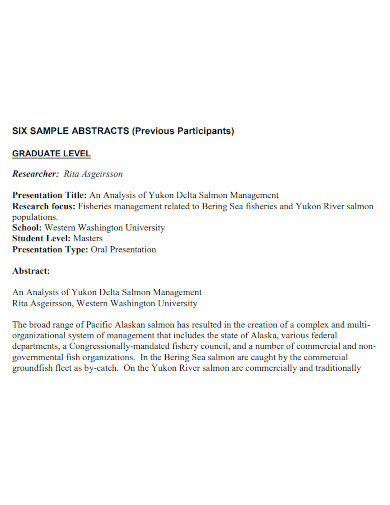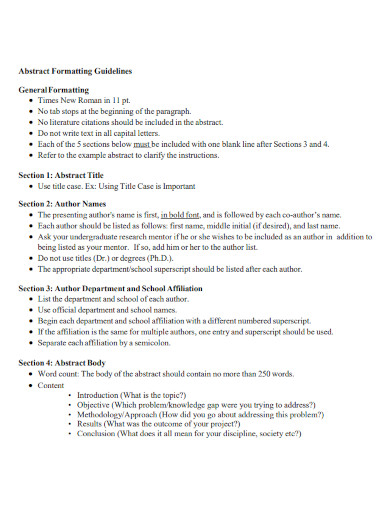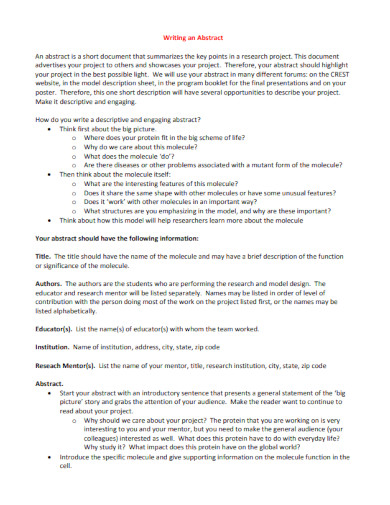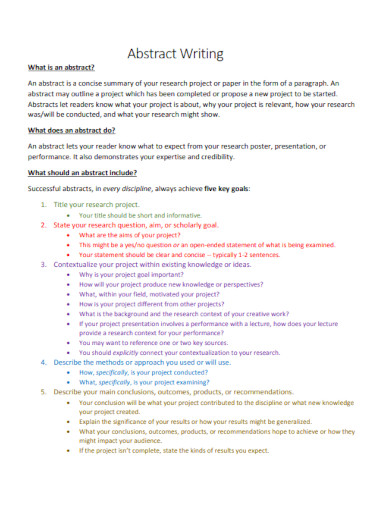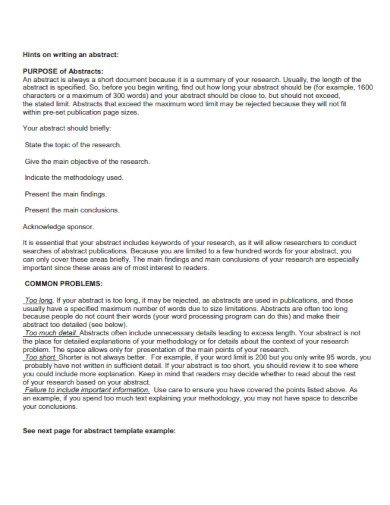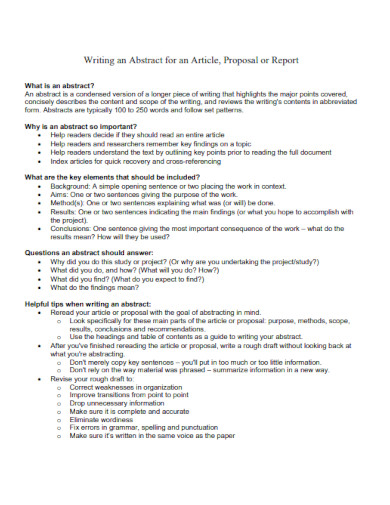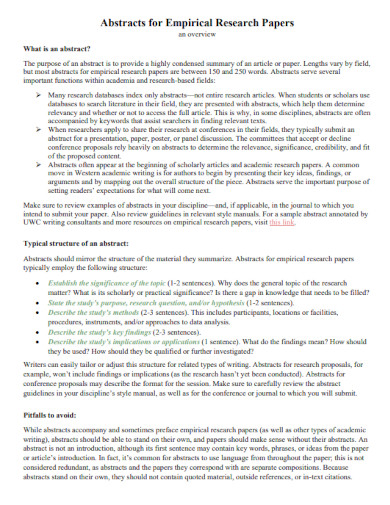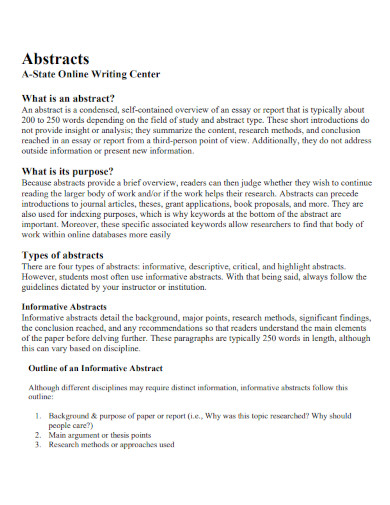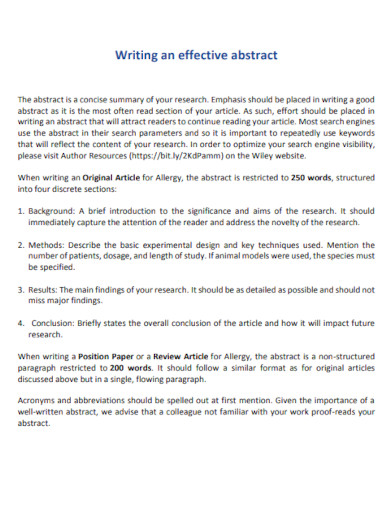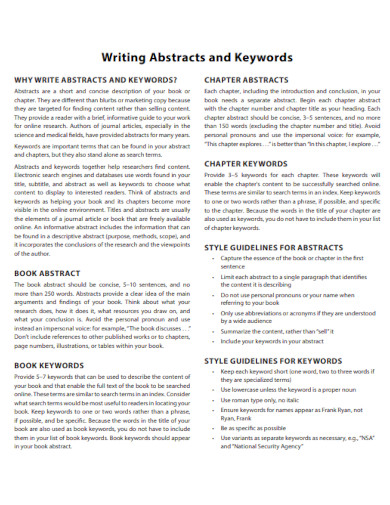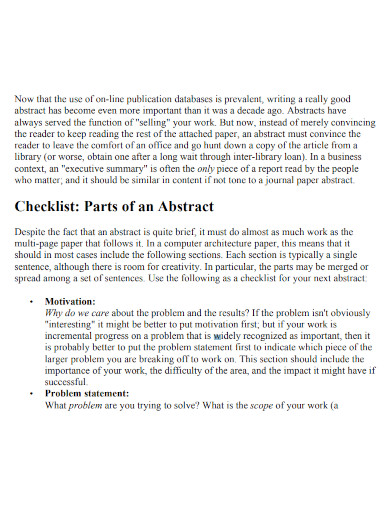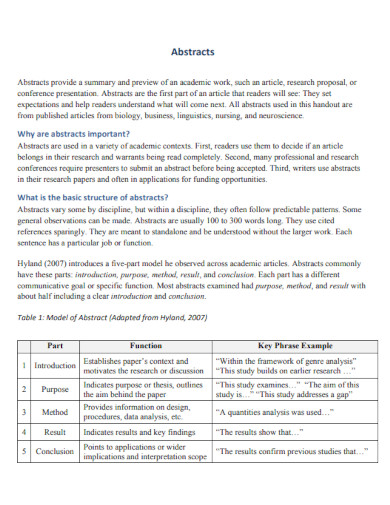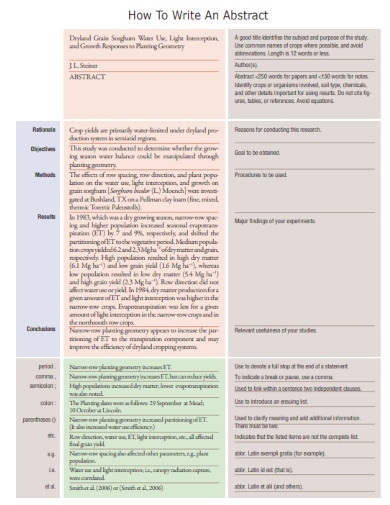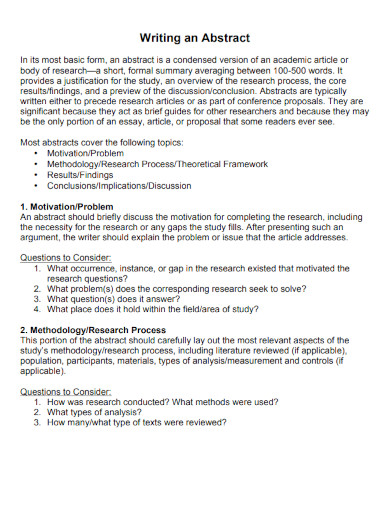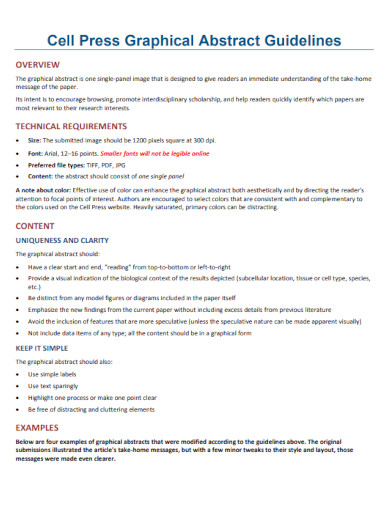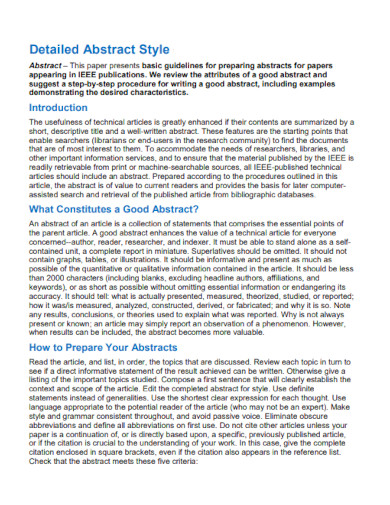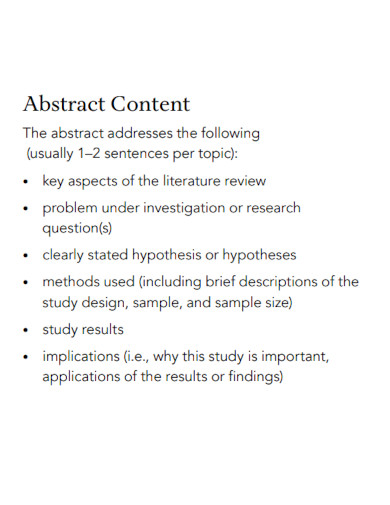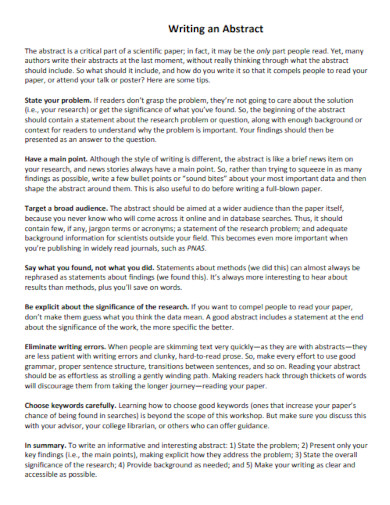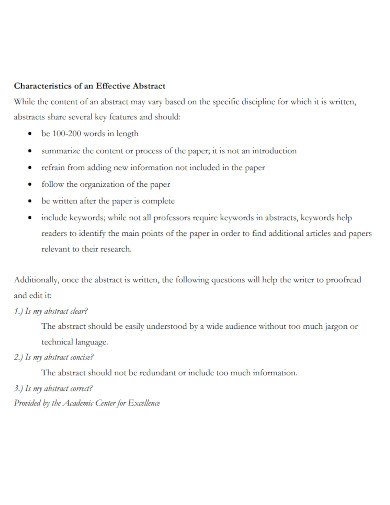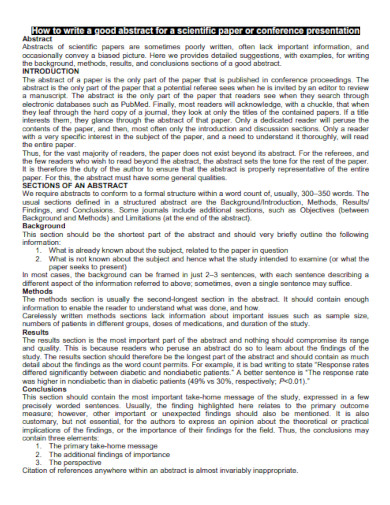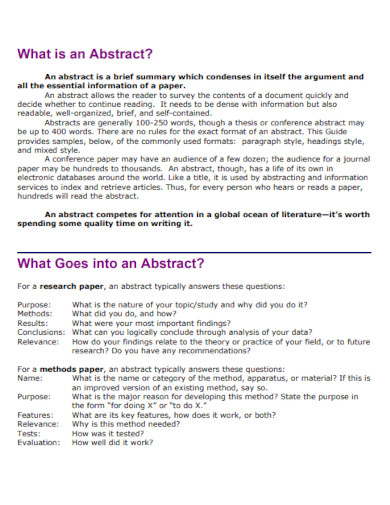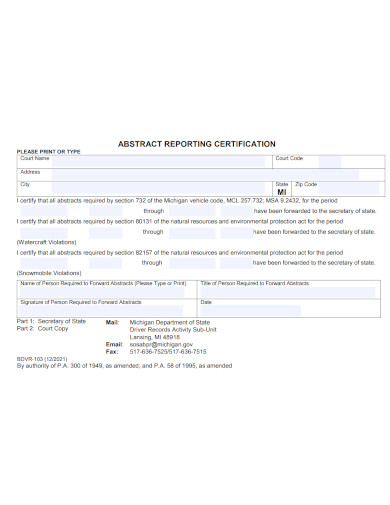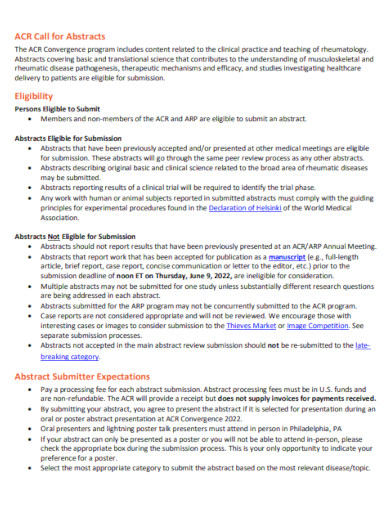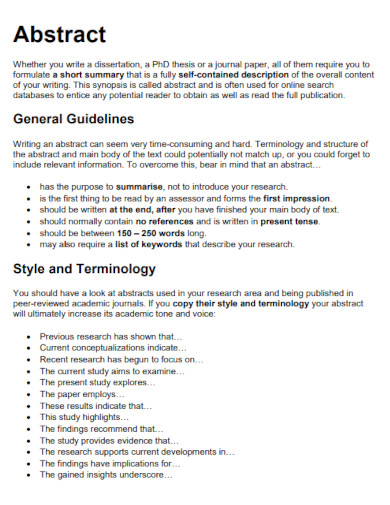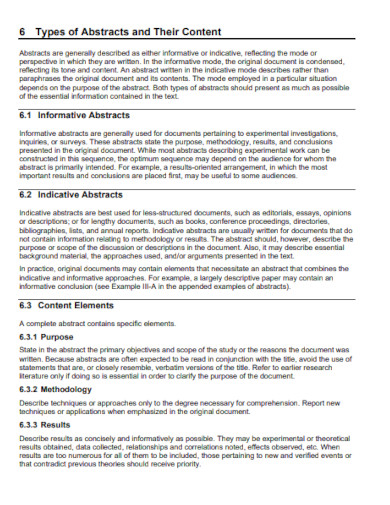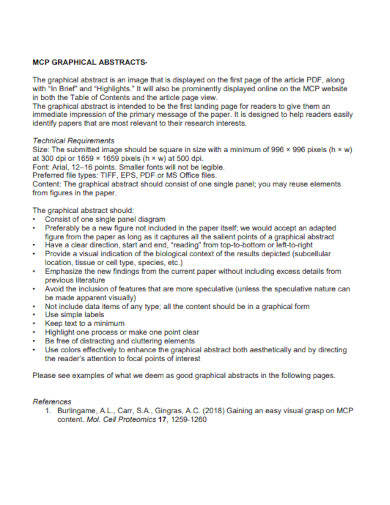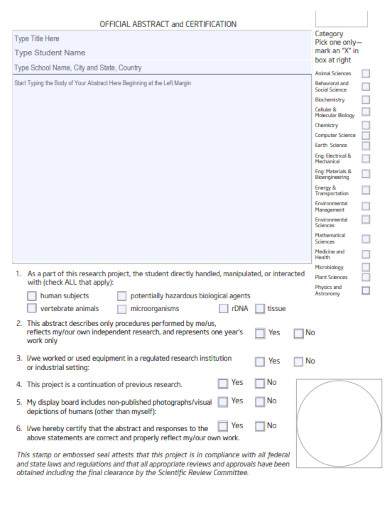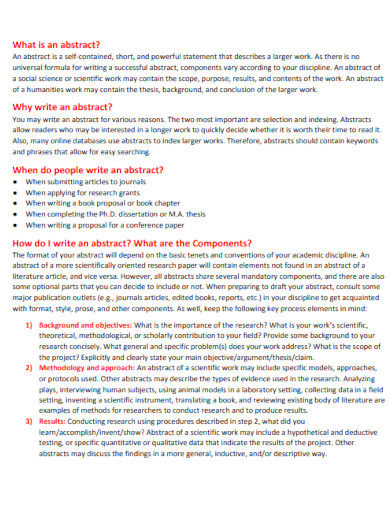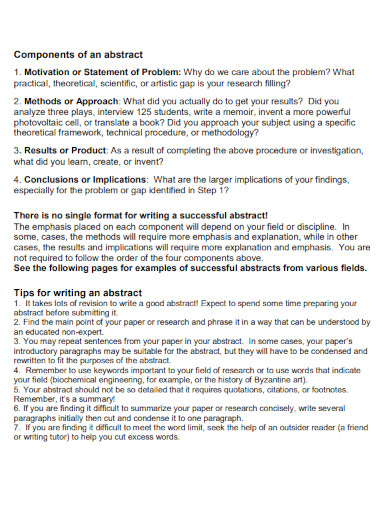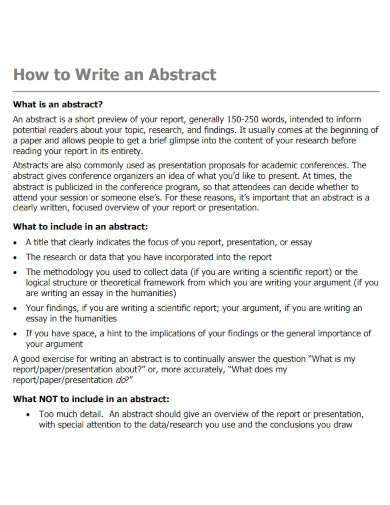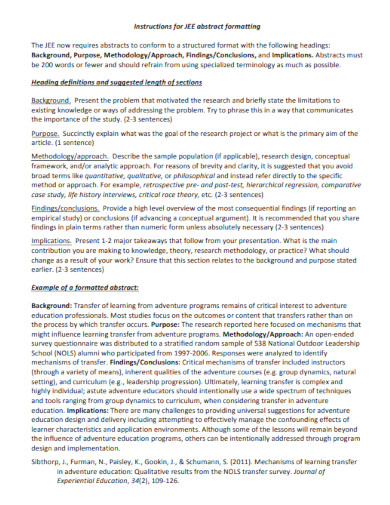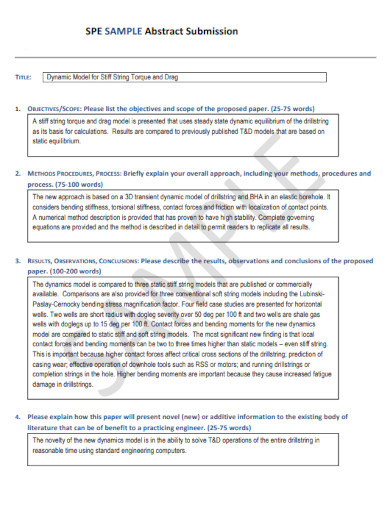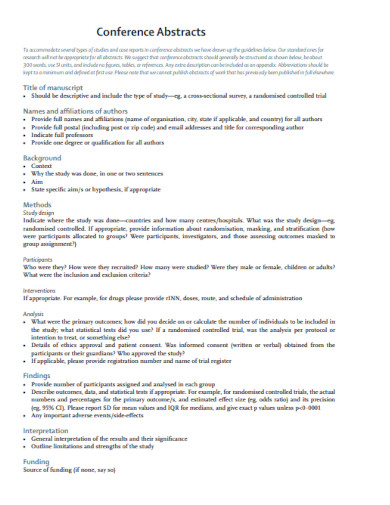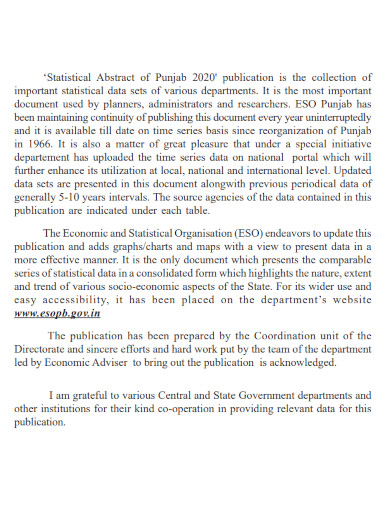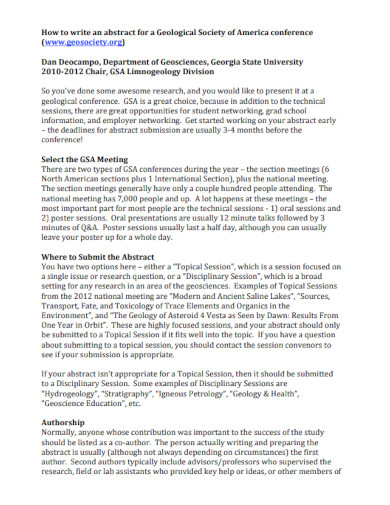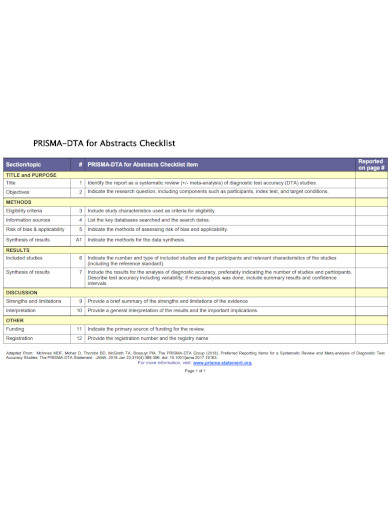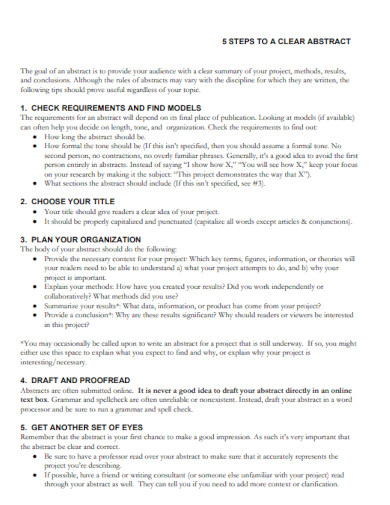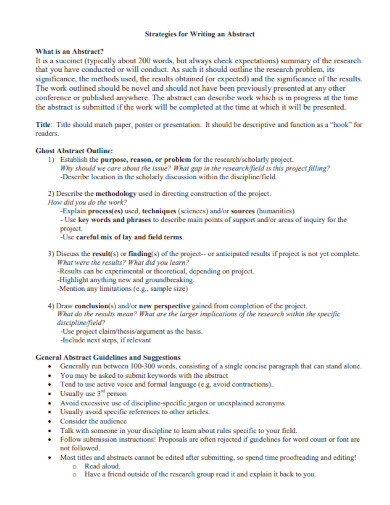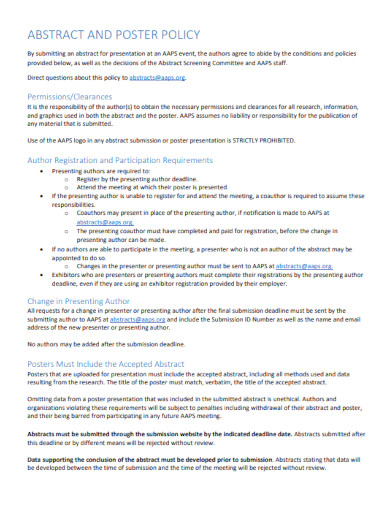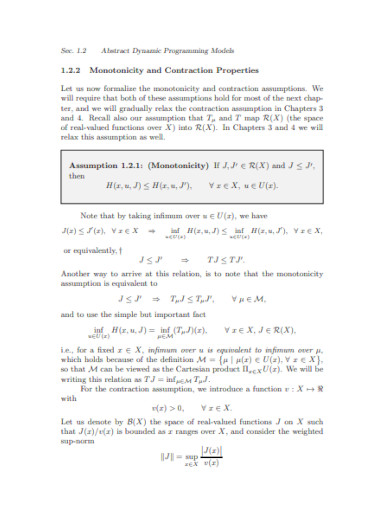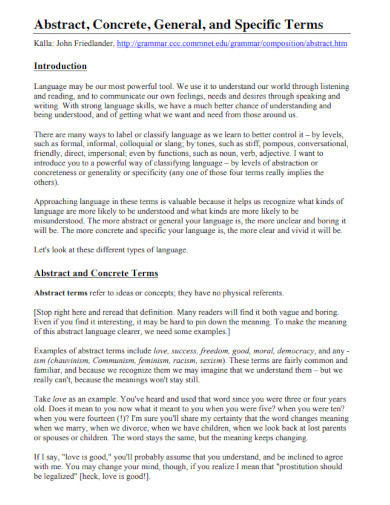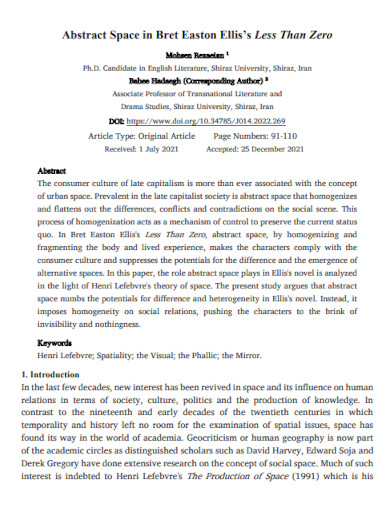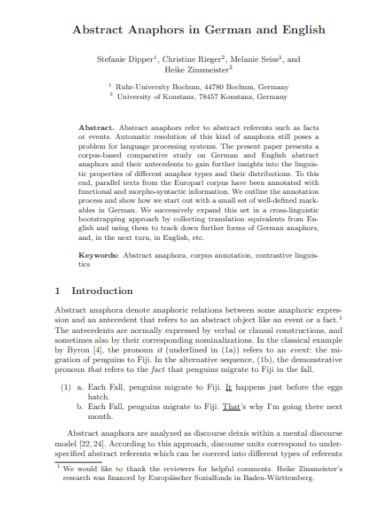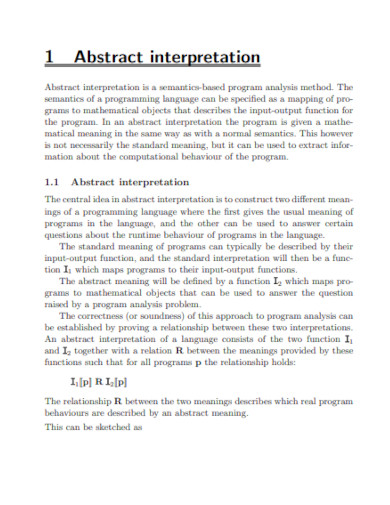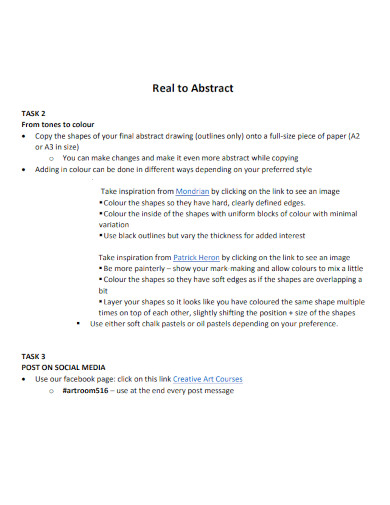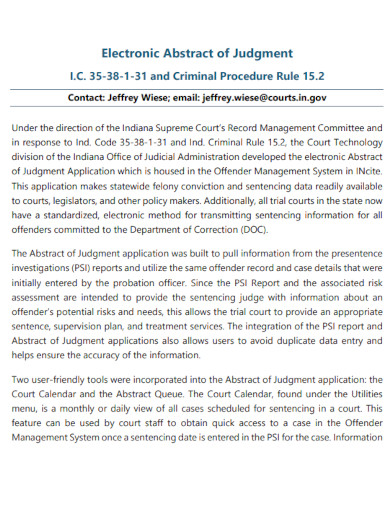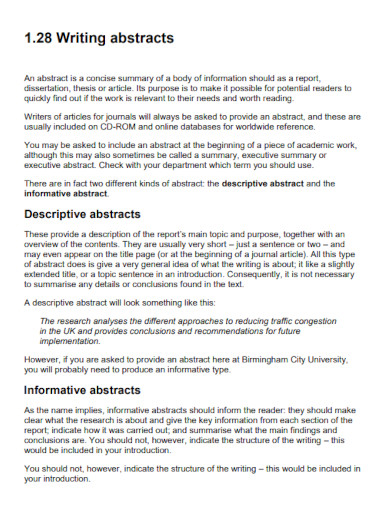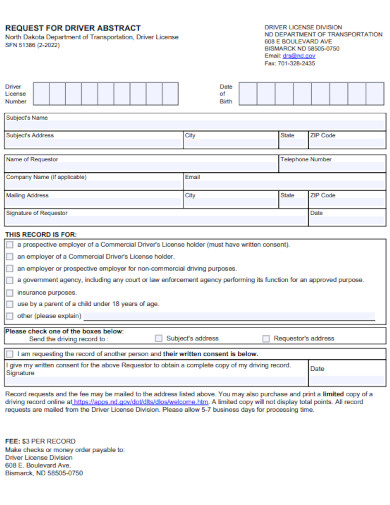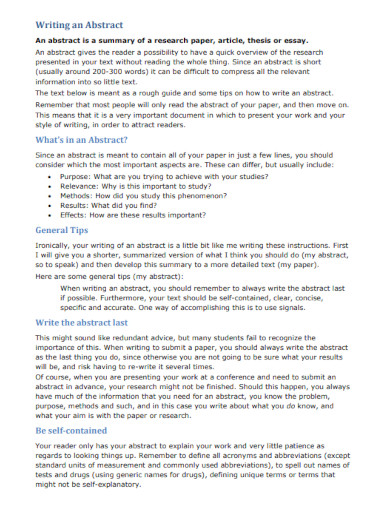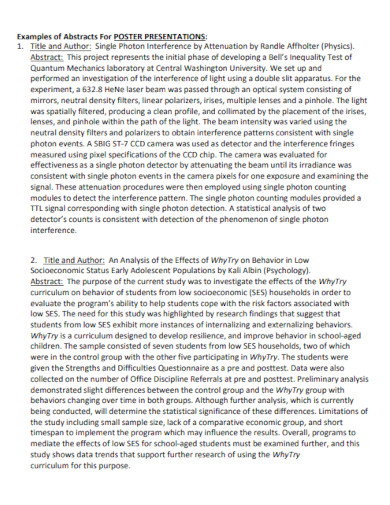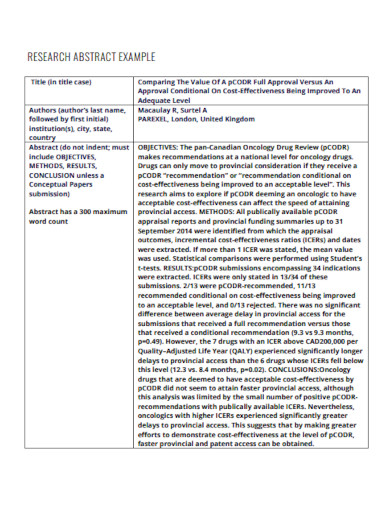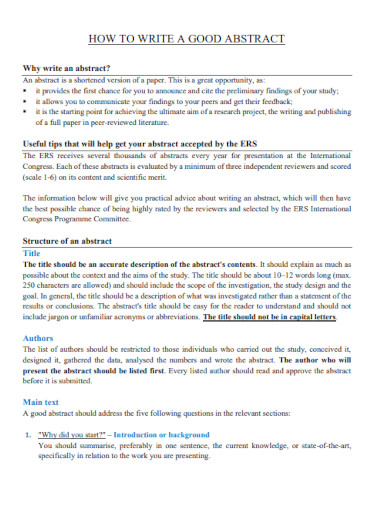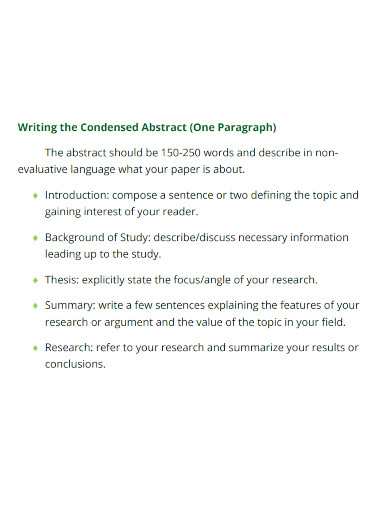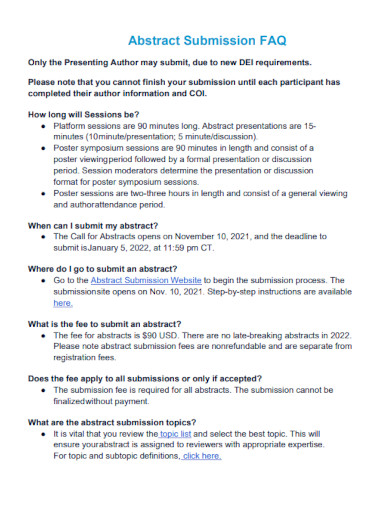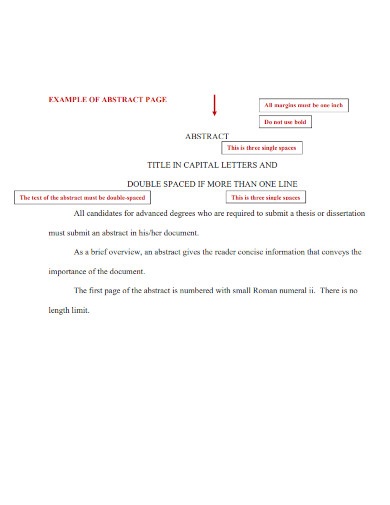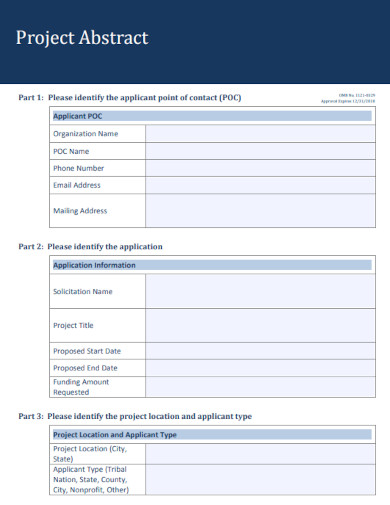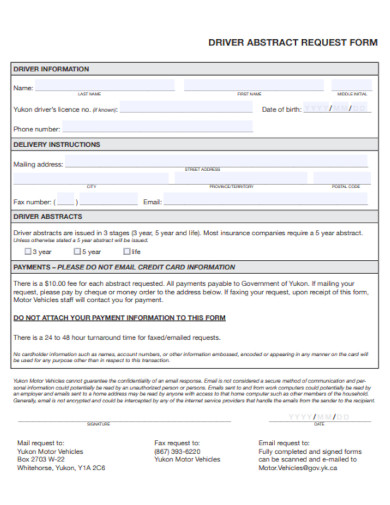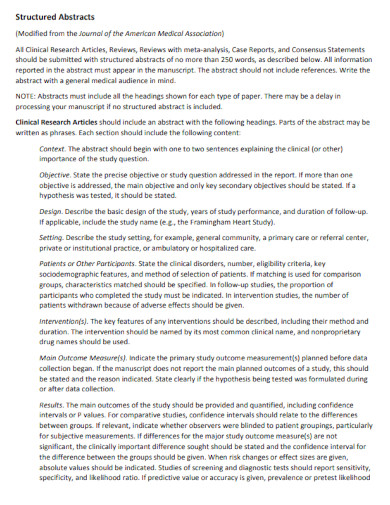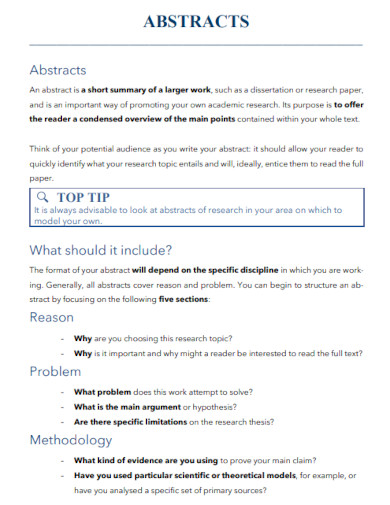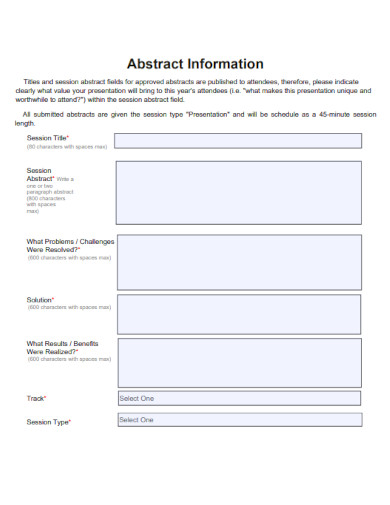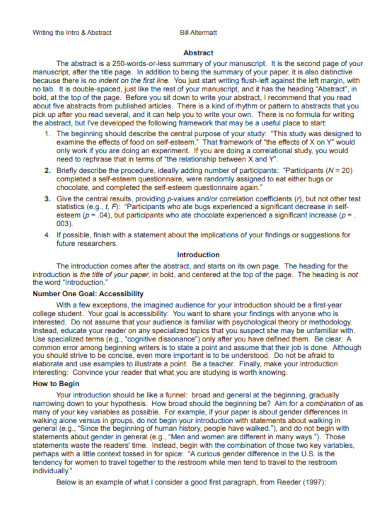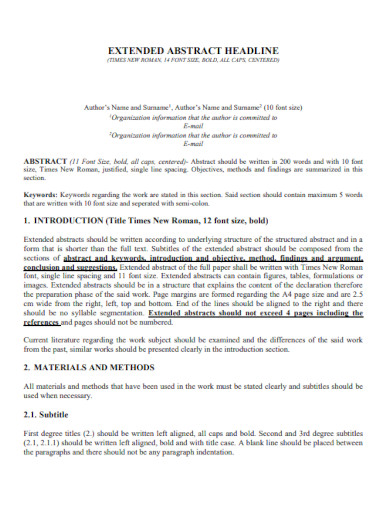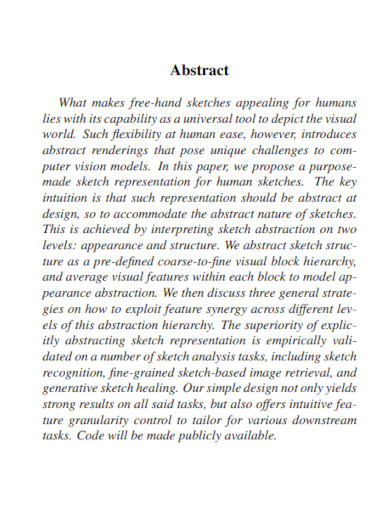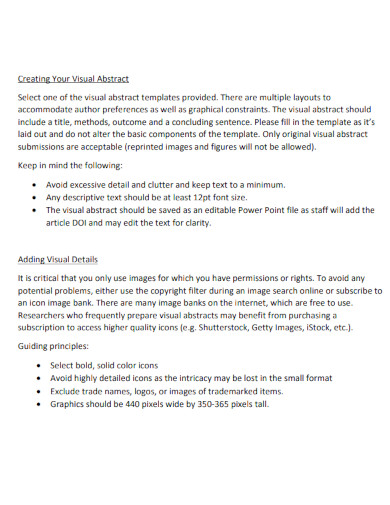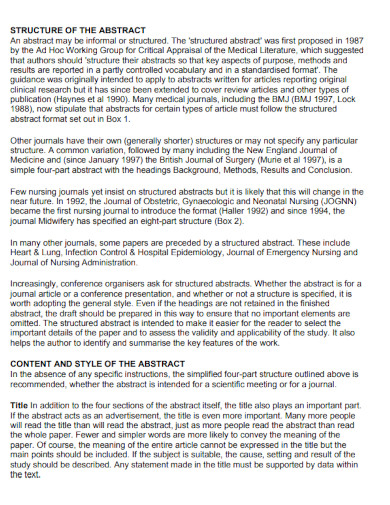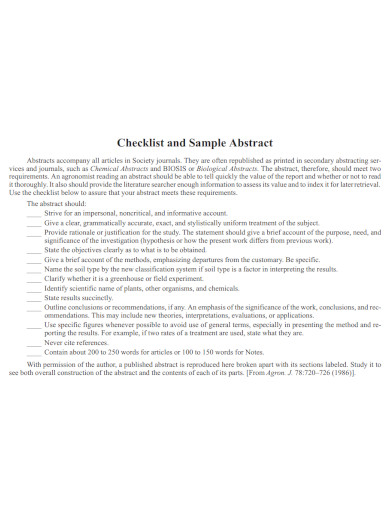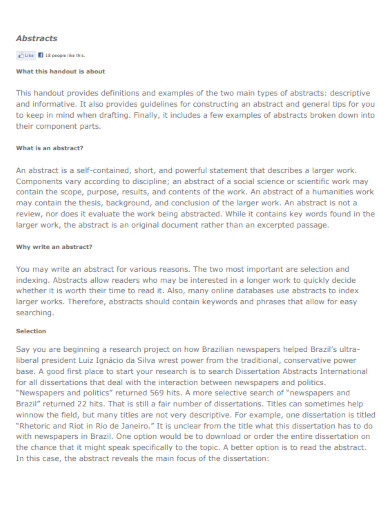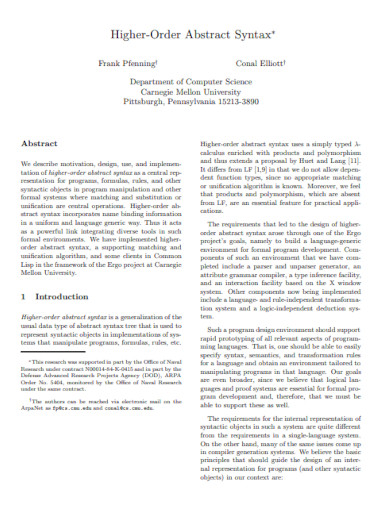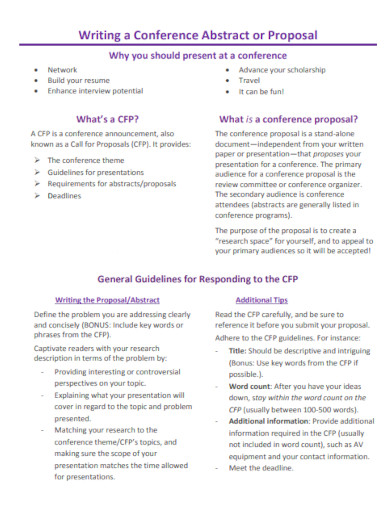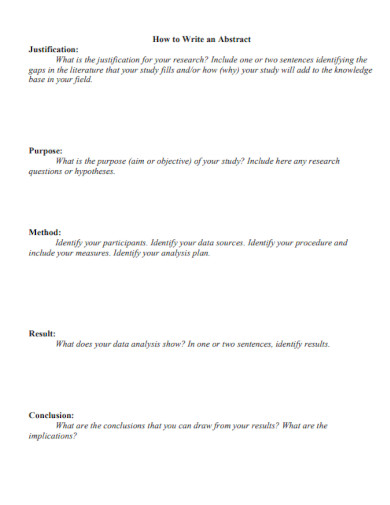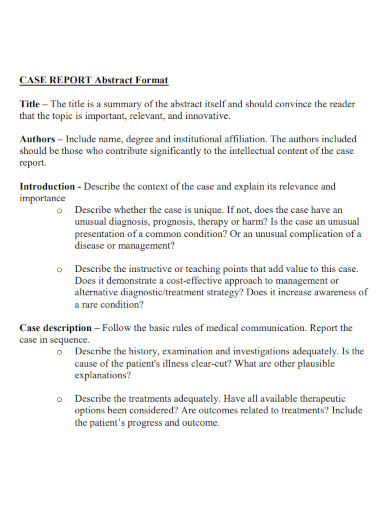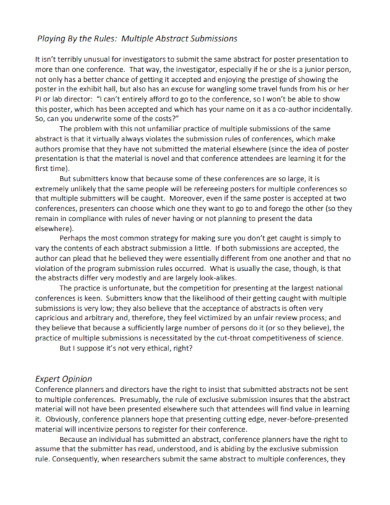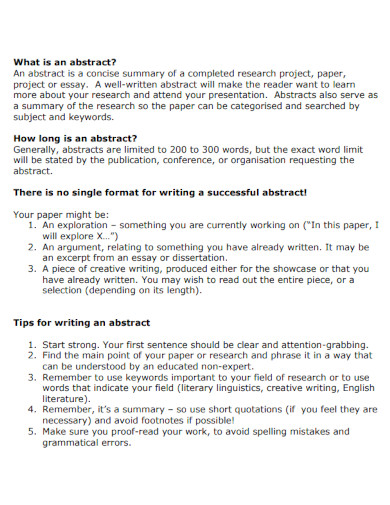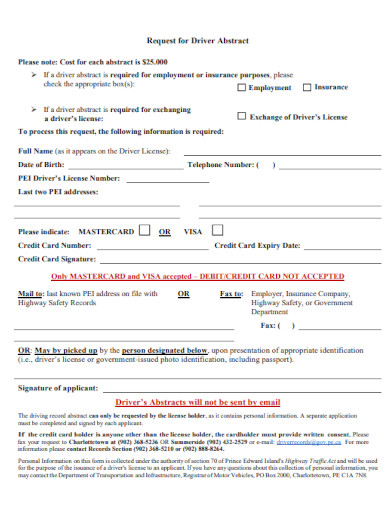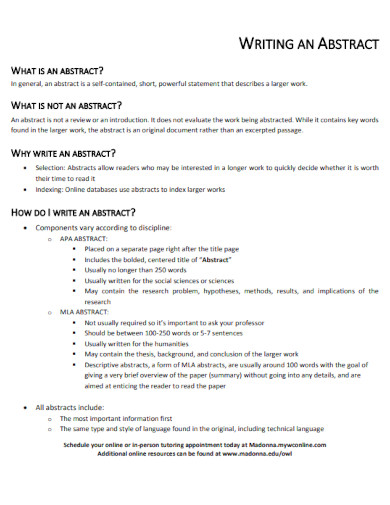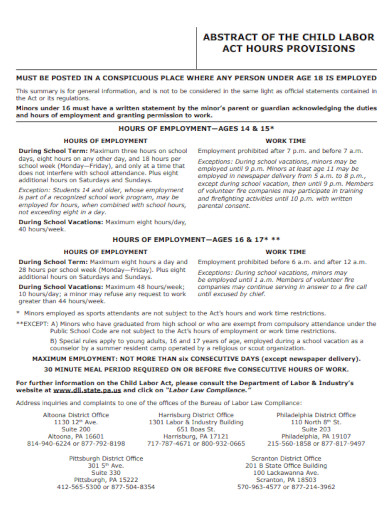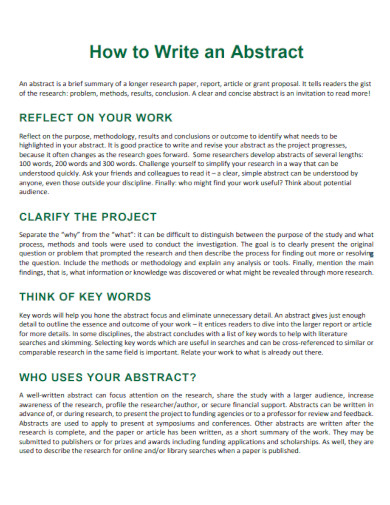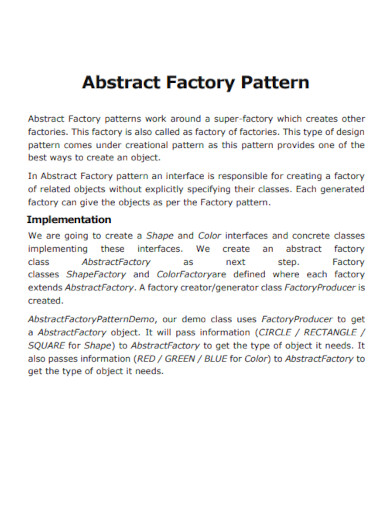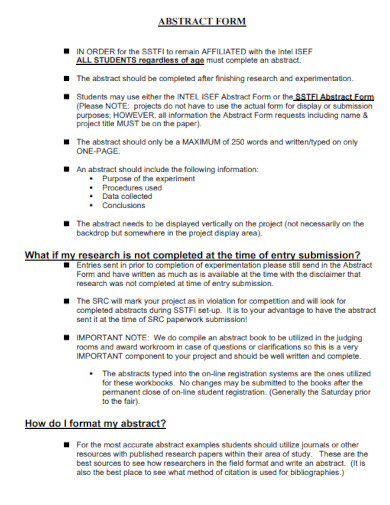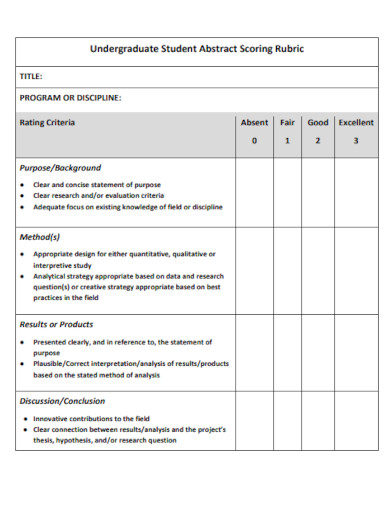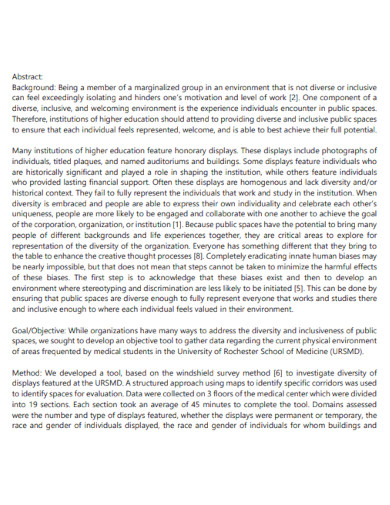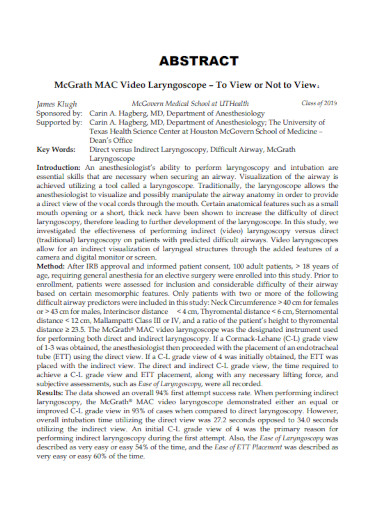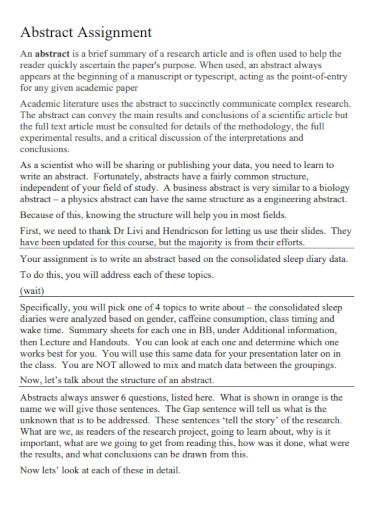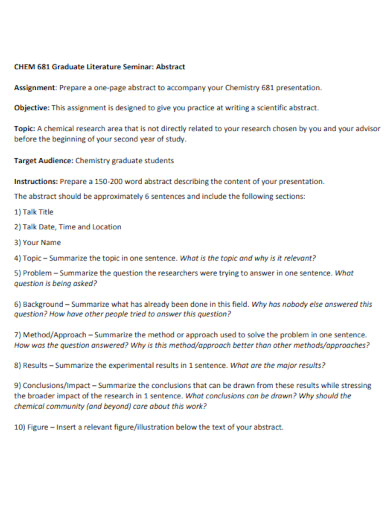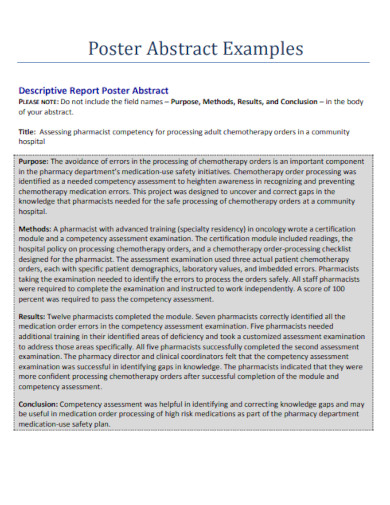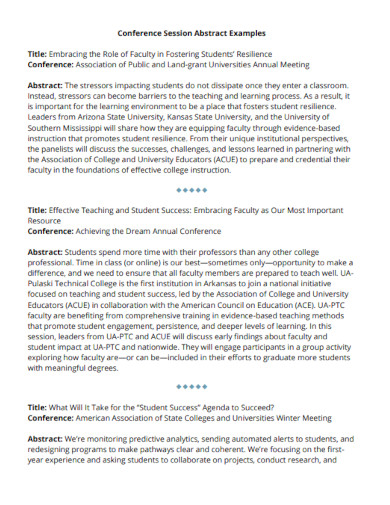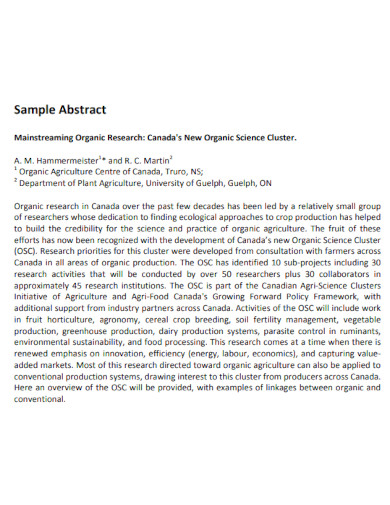100+ Abstract Examples to Download
When you preview a research paper or thesis online, the website will automatically show you the abstract of the paper. This short paragraph will introduce you to the topic and indicate the outcome of the research for the reader.
1. Writing an Abstract
2. Six Sample Abstracts
3. Whats Abstract
4. Abstract Formatting
5. Abstract PDF
6. Abstract Document
7. Abstract Writing Example
8. Purpose of Abstract
9. Abstract for an Article
10. Abstracts for Empirical Research Papers
11. Abstracts
12. Effective Abstract
13. Writing Abstracts and Keywords
14. Parts of an Abstract
15. Abstract Format
16. Abstract Example PDF
17. University Abstract
18. Graphical Abstract
19. Detailed Abstract Style
20. Abstract Content
21. Abstract for a Paper
22. Characteristics of an Effective Abstract
23. Good Abstract
24. Formal Abstract
25. Abstract Reporting Certification
26. Call for Abstracts
27. Abstract Style and Terminology
28. Descriptive Abstract
29. Graphical Abstract Sample
30. Official Abstract
31. Research Abstract
32. Components of an Abstract
33. Abstract Writing in PDF
34. Writing a Research Abstract
35. Academic Abstract
36. Short Abstract
37. Abstract Formatting Example
38. Sample Abstract Submission
39. Abstract Patent Factsheets
40. Conference Abstracts
41. Statistical Abstract
42. Abstract for a Geological Society
43. Abstract Checklist
44. Clear Abstract
45. Strategies for Writing an Abstract
46. Thesis Abstract
47. Big Data Analytics Abstract
48. Abstract Sample
49. Abstract and Poster Policy
50. Abstract Dynamic Programming
51. Concrete Abstract
52. Abstract Space
53. Abstract in English
54. Abstract Conclusion Worksheet
55. Abstract Interpretation
56. Real to Abstract
57. Electronic Abstract of Judgment
58. Informative Abstract
59. Request for Driver Abstract
60. Abstract Summary
61. Abstract for Poster Presentation
62. Research Abstract Example
63. Writing Good Abstract
64. Condensed Abstract
65. Abstract Submission PDF
66. Abstract Page
67. Project Abstract
68. Organizing the Abstract
69. Driver Abstract Request Form
70. Structured Abstracts
71. Simple Abstract
72. Abstract Information
73. Intro and Abstract
74. Sample Extended Abstract
75. Sample Abstract Format
76. Visual Abstract
77. Abstract Template
78. Structure of the Abstract
79. Checklist and Sample Abstract
80. Writing Center Abstract
81. Higher-Order Abstract Syntax
82. Conference Abstract Proposal
83. How to Write an Abstract
84. Abstract Case Report
85. Multiple Abstract
86. English Abstracts
87. Request for Driver Abstract Example
88. Draft Abstract
89. Abstract of the Child Labour
90. Abstract Project Work
91. Abstract Factory Pattern
92. Abstract Form
93. Student Abstract
94. Abstract Journal
95. Medical Student Abstract
96. Abstract Assignment
97. Graduate Abstract
98. Poster Abstract
99. Conference Session Abstract
100. Sample Abstract
What Is an Abstract
The abstract is a single succinct summary of the research paper or thesis that will be situated at the beginning of the research paper or thesis. The abstract is located behind the title page but before the introduction, and is often on the same page as the introduction.
How to Write an Abstract
The abstract is a single paragraph at the beginning of the summary that will preface the introduction of the paper. The abstract should only span five to six sentences and should not go beyond the upper limit.
1.) Outline the Abstract
Begin by outlining the format of the abstract on a separate piece of paper or a digital notetaking software. You will need to indicate and plan out what topic each sentence of the paragraph should talk about. The outline is used because it can help parse out the abstract’s contents as the length of the abstract is very limited.
2.) Indicate and Introduce the Topic
You will need to start the abstract with a sentence that encapsulates the overall topic of your research paper or thesis. This introduction should indicate the title of your research paper or thesis statement, as it will ensure your reader will understand what the researchers are trying to research.
3.) Write Down the Purpose of the Research
You will need to write down the purpose of your research after you have introduced your topic in the abstract. This part will indicate why your research is important and how this research has contributed to the specific gap or niche the research topic is in. This should only span one sentence but can be stretched to two sentences.
4.) Connect the Topic to the Findings Obtained from the Research
After you have written the topic and the purpose of said topic, you will need to write down the findings of your research and connect the points to the research topic. This part will span two sentences in the abstract. When you have finished writing this part, you will end the abstract with a concise concluding sentence.
FAQs
What’s the difference between the literary meaning of abstract and the usage of the concept of abstract in art?
The abstract, in a literary context, refers to the concise summary of the research paper or thesis. Whilst abstract when used as an artistic concept is the usage of colors, shapes, textures, and forms to elicit emotions from the viewers. Abstract expressionism utilizes little to no realistic forms in the output of abstract painting.
What is the use of the abstract in APA?
People use the abstract to succinctly describe and summarize the whole research paper in a couple of sentences. The purpose of the abstract is to act as an introduction to the whole research and is the first impression of the research or thesis that readers will scan through. This is because the abstract will present the topic, the findings, and a bit of the conclusion in one tight paragraph.
Which part of the writing process should the abstract be made on?
The abstract should be made after the researchers have written down a conclusion and edited their research paper or thesis. This is because the abstract will require researchers to summarize the topic, the data obtained from the research, and the conclusion in a single paragraph.
A well–written abstract can introduce and summarize the whole research paper or thesis in a single paragraph. Not only will this act as a summary of the research paper or thesis, but the abstract will also act as a hook for the readers to obtain the research and read through your findings. In conclusion, the abstract acts as the preface of your research paper or thesis.



